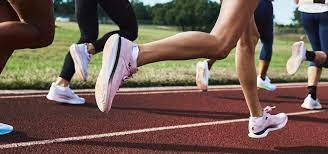
G Rajaraman
World Athletics, the global governing body for track and field sport, has done well to stand up for fair play and rights of female athletes by not only altering the DSD (Differences of Sexual Development) Regulations but also extend it to all events from just the earlier restriction of 400m to one mile races and to all World Athletics ranking competitions from just international meets.
A disclaimer will be in order here: There can be no doubt that DSD and Transgender athletes have a right to participate in competitive sport. Indeed, things would be much simpler in the world of sport if humans were only male and female but there is a percentage of the population that defies such classification. And women’s right to expect fair competition must never be overlooked.
Like all decisions which cannot appease all groups of people, this will undoubtedly draw flak, especially from those who advocate that gender identity must be respected and those who identify themselves as female must be allowed to compete in the female category. But having based its decision on science and a decade-long research, World Athletics stands on firm ground.
World Athletics would have felt empowered by its victories in the Caster Semenya cases in the Court of Arbitration for Sport (CAS) and the Swiss Federal Court. Besides, for over a decade, World Athletics has been researching the advantage that DSD athletes gain over female athletes. That is the reason it has lowered the testosterone threshold from 5nmol/liter to 2.5nmol/liter.
World Athletics President Lord Sebastian Coe admitted that it was not an easy decision to make. “Decisions are always difficult when they involve conflicting needs and rights between different groups, but we continue to take the view that we must maintain fairness for female athletes above all other considerations,” he said.
“We will be guided in this by the science around physical performance and male advantage which will inevitably develop over the coming years. As more evidence becomes available, we will review our position, but we believe the integrity of the female category in athletics is paramount,” Lord Coe said.
A walk down the pages of history may help understand the complex issue better.
- In the 1936 Olympic Games in Berlin, Polish journalists questioned an American sprinter Helen Stevens’ femininity and the German officials issued a statement that she had passed a ‘sex check’.
- In the 50s, a German man confessed that he had been forced to compete as a woman in the Berlin Games.
- The 1966 World Cup Ski women’s title winner retired from the sport after a medical exam and is said to have had a sex reassignment surgery and fathered a child.
- In the 1960s, the International Olympic Committee (IOC) needed women competitors to strip before a panel of doctors to prevent imposters from taking undue advantage in female competition. There is no record of any such imposter being caught, but it is possible that they backed off from presenting themselves before the medical panels.
- In 1968, IOC introduced a Chromosome test as a way of identifying males potentially disguised as females It was later abolished as it was an inconclusive way of identifying maleness.
- Spanish hurdler Maria Jose Martinez Patino protested the regulations and after three years, International Association of Athletics Federations (IAAF), as World Athletics was then known, agreed that since her body was not drawing an advantage of the excess testosterone, it reinstated her.
- In 1990, IAAF convened a committee of physicians from genetics, pediatrics, endocrinology, and psychiatry, in Monte Carlo to develop an alternative method for gender verification. The committee believed that revealing, contemporary athletic clothing and the routine dope testing required observation by an official to verify that the sample from a given athlete is truly his or hers, were enough to prevent disguising gender.
- In 1992, IAAF did away with all gender testing. Other disciplines followed suit.
- IOC replaced the test with a new DNA-based method, implemented at the 1992 Winter Olympics in Albertville.
- In 1999, after the IOC Athletes Commission called for discontinuation of gender verification, the IOC Executive Board decided to discontinue the onsite genetic screening of females.
- In 2003, IOC guidelines needed athletes who transitioned from male to female or vice versa to have reassignment surgery followed by at least two years of hormone therapy to be eligible to compete.
- In 2011, IOC confirmed the need to set up clear rules to determine the eligibility of female athletes with hyperandrogenism in female competitions. It laid down that a female recognised in law should be eligible to compete in female competitions ‘provided that she has androgen levels below the male range (as shown by the serum concentration of testosterone) or, if within the male range, she has an androgen resistance such that she derives no competitive advantage from such levels’.
- IOC and IFs retained the right to test an athlete’s chromosomes when questions about her sex arose and to follow that with a hormone test, a gynecological exam and a psychological evaluation.
- In 2014, India’s Dutee Chand challenged IAAF’s Hyperandrogenism policy before CAS.
- On July 24, 2015, CAS partially upheld Dutee Chand’s appeal, stayed the IAAF Hyperandrogenism Regulations for two years and asked IAAF to produce evidence that high levels of Testosterone in Hyperandrogenic females give them an advantage
- In 2018, IOC directed transgender and intersex athletes to have testosterone levels below a certain threshold to be eligible to compete in the Olympic Games.
- In April 2018, IAAF issued new regulations for female classification to come into effect from November 1 that year. Based on available data and research, these restricted DSD athletes from competing in track events featuring distances from 400m to one mile.
- In June 2018, South Africa’s Caster Semenya challenged these new regulations before CAS, which stayed them during the pendency of the case.
- On May 1, 2019, CAS upheld the DSD regulations of IAAF.
- On September 8, 2020, Caster Semenya’s appeal against the CAS decision was turned down by the Swiss Federal Court which said fairness in sport is a legitimate concern and forms a central principle of sporting competition. CAS rightly considered the other relevant interests, namely the private interests of the female athletes, it said.
- On May 11, 2021, World Rugby published Transgender Guidelines
- In November 2021, IOC assigned the responsibility of making gender policies to the various International Federations (IF), offering them assistance to make fair rules. It urged the IFs to consider ethical, social, cultural and legal aspects when drawing up the rules.
- On June 20, 2022, FINA, as World Swimming was known then, published policy on eligibility for men and women’s categories.
Meanwhile, according due respect to athletes’ privacy, everyone must stop speculating if any Indian track and field athletes drop out from the radar because their T-levels do not comply with the new regulations.




